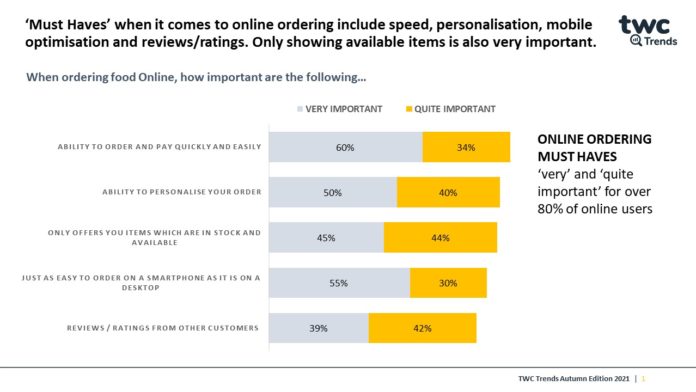TWC Trends recent Online Explosion report has explored how digitisation and delivery of food and drink are affecting convenience retail.
The report found that 38% of those who buy groceries online will also top up their main shop using online grocery websites.
30% of consumers have used other channels than supermarkets for some of their purchasing of groceries online. Respondents referenced the use of third party apps such as Deliveroo to do their grocery shops, however, Amazon was the most popular channel with 13% of consumers having ordered from the online giant.
Communications director for TWC, Sarah Coleman, said that this figure is high given Amazon’s small market share in grocery.
Read more: TWC research shows growth in sustainable meal options
Coleman commented: “Frequency and basket size will need to increase for Amazon to make significant headway in grocery. As we’ve already seen, appealing to the younger shopper will be key to winning the online grocery top up mission.”
According to TWC, the key age demographic for online shopping for groceries from a supermarket’s website is 35-54. However, other channels for grocery deliveries such as Deliveroo, Amazon, delivery direct from a convenience store and meal kit boxes have a younger key demographic of 18–34-year-olds.
Coleman added: “Whilst the uptake of QR codes and live streaming is fairly consistent across all age groups, other tech such as Apple/Google Pay, voice search and buying items directly from social media posts are all biased towards the younger shopper.”
“For instance, 41% of 18–34’s have used Apple/Google Pay in the last month, whilst 1 in 5 have purchased an item directly from a social media post on Instagram, TikTok or Facebook, making this age group 60% more likely to do this than the average consumer.”
Read more: TWC and CJ Lang collaborate on data reporting service
Over half of 18-34-year-olds indicated a preference towards the use of cutting-edge technology like Augmented Reality to showcase products is important when ordering food/drinks online, despite only 2% saying they have seen AR in practice.
Coleman continued: “Augmented Reality has been adopted well within fashion but is yet to make significant traction in food and drink. In our view this could offer an effective way of replicating the in-store experience, which we know is the biggest barrier to online grocery shopping. Half of shoppers that hadn’t shopped online for groceries said it was because they prefer going to the shop for groceries in person, whilst a similar proportion agree that they like to browse the aisles.
“Two-thirds of shoppers who haven’t shopped for groceries online in the last 3 months think it is unlikely that they will do so next year, suggesting that online grocery penetration could plateau – at least unless some of the current barriers are addressed. Driving more online top up shops will certainly help to drive frequency, especially amongst the younger generation who are most engaged with this mission.”
“Who can own this space is still unclear – and also whether it can be done profitably, especially outside of London and other big cities. We can’t deny that Amazon remains a real threat to the traditional wholesale and retail markets, but frequency and basket size will need to increase before it can make significant headway in grocery.”








